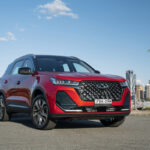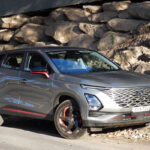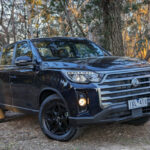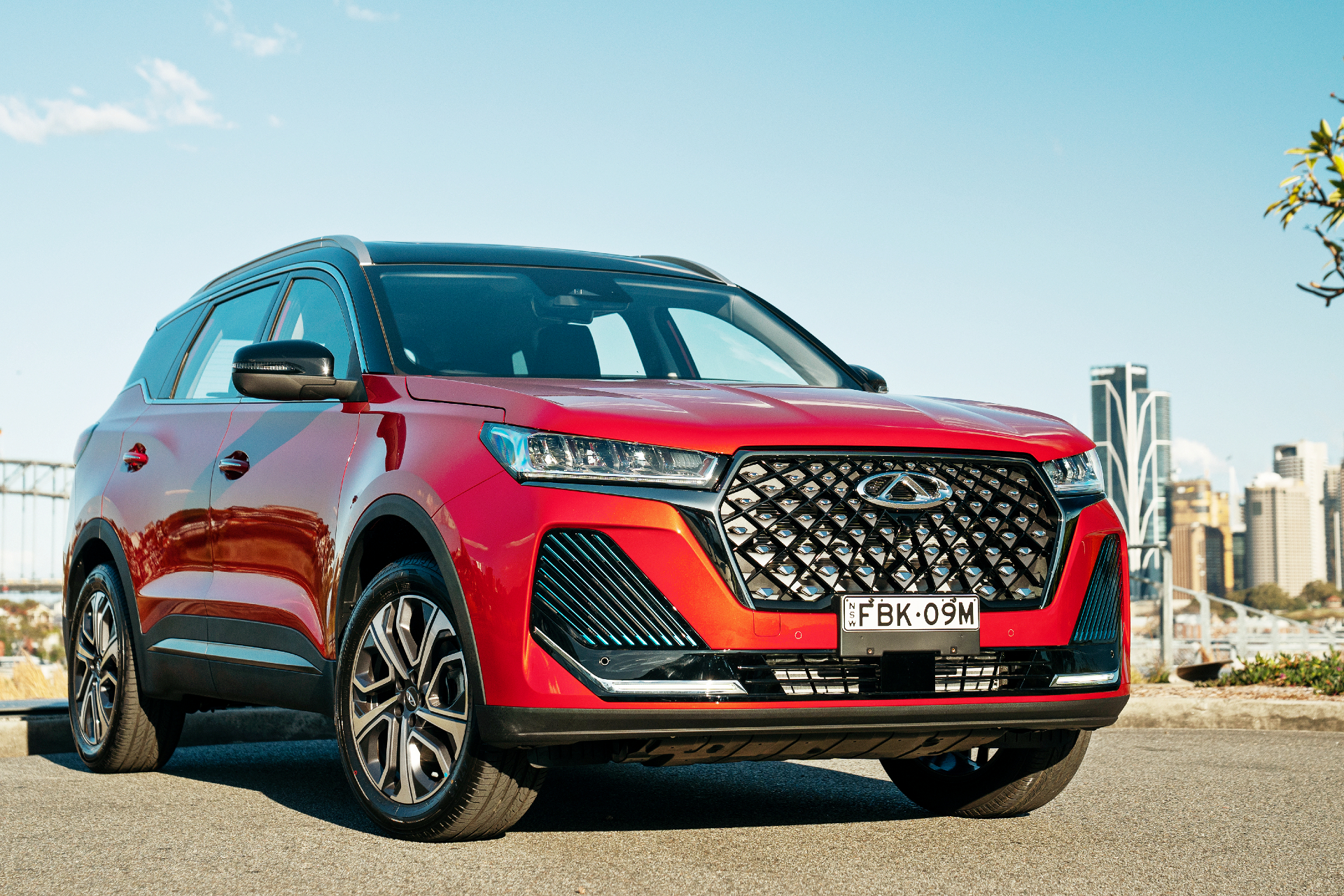
It’s becoming increasingly difficult to tell small SUVs apart, with a plethora of new brands and names.
The Tiggo 7 Pro is a five-seater from a name that may ring a bell with some readers, a Chinese brand called Chery.
A couple of Chery hatches and a small SUV were offered here about 10 years ago,but withdrawn from sale after the introduction of tougher safety regulations.
While those vehicles were imported independently, newcomers the Omoda 5, Tiggo 7 and Tiggo 8 Pro are all factory backed offerings.
They’re better-engineered, up-to-date vehicles with five-star safety ratings and a 7-year warranty.
The message is clear – China’s largest and most successful car manufacturer is here and ready to rumble.
STYLING
The look is smart and contemporary, well proportioned with raked lines and unlikely to scare off any would-be buyers.
Like other Chinese SUVs, the Chery Tiggo 7 Pro offers plenty of bang for your buck in terms of equipment and safety features.
The five-seat Tiggo 7 Pro comes in three grades: Urban ($39,990), Elite, ($41,990) and Ultimate, ($45,990) — all prices are driveaway.
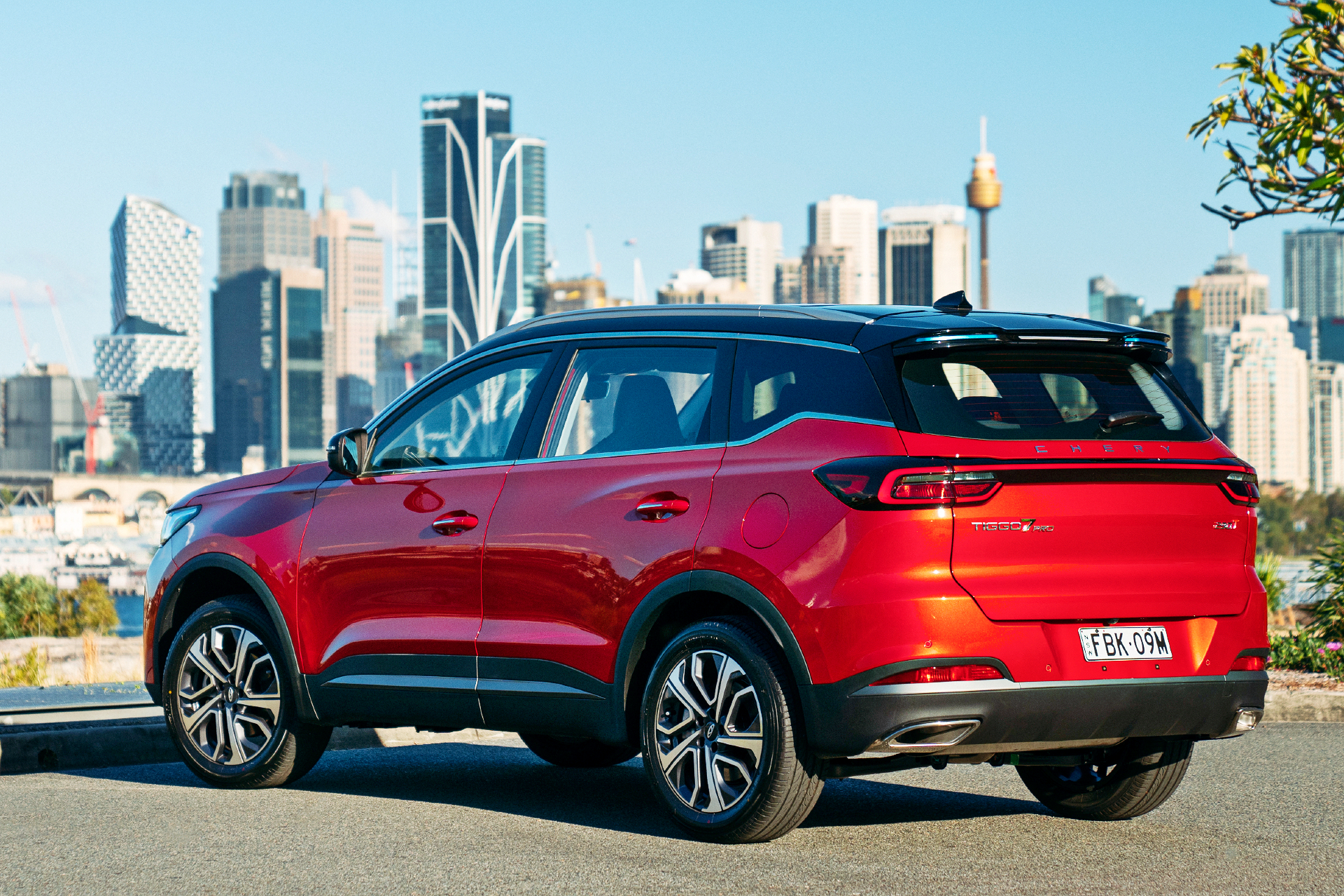
Urban and Elite are two-wheel drive, Ultimate is all-wheel drive.
Standard kit includes artificial leather trim, dual zone climate control with rear air vents, heated power-adjust driver and front passenger seats, plus ambient interior lighting and a panoramic sunroof.
You also get 18-inch alloys, adaptive cruise control, auto high beam, traffic sign recognition, keyless entry and start, auto lights and wipers, LED head, tail and daytime running lights, plus front and rear parking sensors.
Elite expands the list with a 360-degree camera, auto-folding mirrors, powered tailgate, air quality management system and negative ion air freshener.
Ultimate adds all-wheel drive, larger 19-inch alloys, red front brake calipers, memory for mirrors and driver seat, auto-dimming rear view mirror and ventilated front seats.
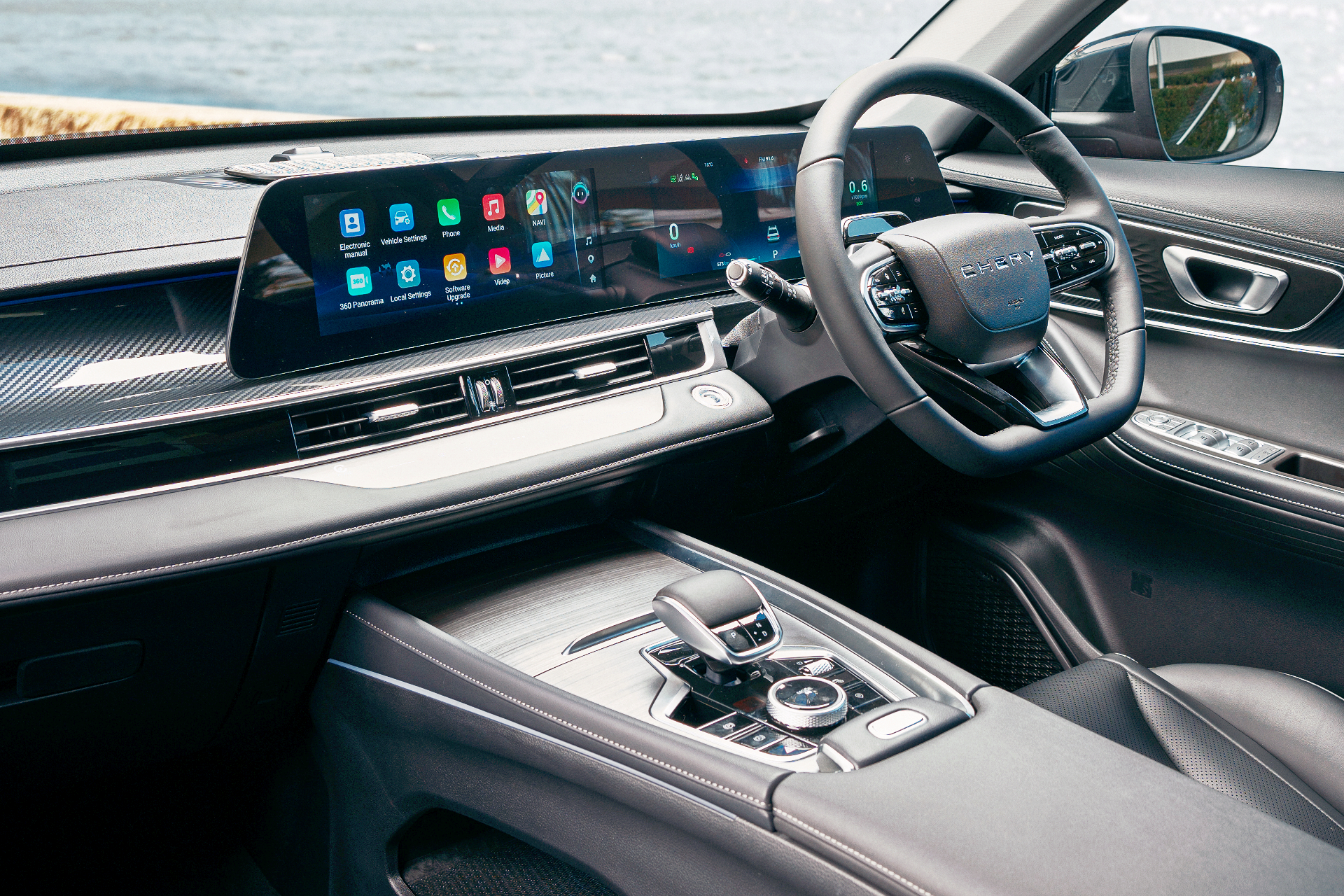
Some features go undocumented, such as walk-away lock/unlock, a chilled console box and an easy-access auto slide driver seat.
Tyre pressure monitoring and a full-size spare are provided.
Tiggo is covered by a 7-year, unlimited-kilometre warranty, 7-year roadside assistance and 7-year capped-price servicing.
Service is due every 12 months or 15,000km.
INFOTAINMENT
Infotainment across the board consists of a 12.3 inch touchscreen, Bluetooth, AM/FM radio, wireless Apple CarPlay and Android Auto, plus eight-speaker Sony audio.
Although it misses out on DAB+ digital radio, it does get built-in satellite navigation, unlike many Chinese competitors.
A second 12.3-inch screen houses the instrument cluster which can be configured in different ways.
There’s also a wireless charge pad for phones.
“Hello Chery” voice-control allows drivers to operate key functions, such as making phone calls or changing the music, without having to take their hands off the wheel.
USB-A and C ports are located in the front, with another USB-A port in the back, plus 12 volt outlets in the front and load area.
ENGINES / TRANSMISSIONS
Power comes from a 1.6-litre turbocharged four cylinder engine that puts out 137kW of power at 5500 rpm and 275Nm of torque at 2000 rpm.
It’s paired with a seven-speed dual-clutch automatic transmission, and is available in two- or all-wheel drive form.
SAFETY
Tiggo gets five stars for safety with eight airbags, including a driver knee airbag.
A centre airbag which provides added protection to front seat occupants in side impact crashes is also standard.
Autonomous emergency braking (Car-to-Car, Vulnerable Road User, Junction & Crossing, Backover and Head-On) as well as a lane support system with lane keep assist (LKA), lane departure warning (LDW) and emergency lane keeping (ELK), and an advanced speed assistance system (SAS) are standard on all variants.
You even get a visual warning if a car or cyclist is approaching when you go to open one of the rear doors.
The only thing really missing is head-up display which projects important information onto the lower part of the windscreen, and means you don’t have to take your eyes off the road.
Isofix child seat mounts are provided for the outer two rear seats, plus three top tethers.
DRIVING
Tiggo 7 Pro feels about the same size as the RAV4, at least inside.
It measures 4513mm in length, 1862mm in width and 1696mm in height, with a 2670mm wheelbase.
In terms of size it sits between the Omoda 5 and the Tiggo 8 Pro which has only just been launched here.
Not sure what the numbers are supposed to signify.
The five-seater has plenty of rear legroom, with air vents and a fold-down armrest for rear seat passengers.
A generous load area and power-operated tailgate are sure to be welcome, with an impressive 626 litres of luggage space or 1672 with the rear seats folded.
The artificial leather looks and feels good and those in the front benefit from heated and cooled seats.
Cooling is a bonus with our scorching Australian summers, but dig deeper and you’ll find that only the seat base is ventilated.
With your shirt sticking to the seat, the seat back is where you most want the cooling.
The digital dashboard with its two 12.3-inch screens looks slick and impressive.
But we found the default pastel colours a little washed out and difficult to see in strong sunlight.
Ditto the row of aircon buttons that sit below the screen which can also be difficult to make out.
Good to see a physical volume control too, although it is easy to inadvertently switch off the system if you hit a bump or apply too much pressure to the roller style control.
Working out which steering wheel toggles and buttons do what is less than intuitive.
The touchscreen also takes a bit to work out and can be slow to respond.
Trial and error works best, but all the while you’re chastised for not paying attention to the road ahead.
To our ears the Sony audio system sounds bassy and undefined, and left us wondering whether it consists of anything more than the Sony-badged speakers.
The torque on demand system transmits drive to all four wheels, although it operates in front-wheel drive the majority of the time.
You get six drive modes: Eco, Sport, Normal, Snow, Mud and Off-road.
They are engaged using a large rotary control located in the centre console.
The dash from 0-100km/h takes 9.9 seconds.
Fuel consumption, meanwhile, is a claimed 7.0L/100km, rising to 7.8L with the all wheel drive variant.
Ultimate gets a slightly larger 57-litre fuel tank, in recognition of its heavier fuel consumption.
CO2 emissions are between 163 and 181g/km on the combined cycle.
The turbocharged four offers plenty of poke, with torque available nice and early.
But promising dynamics are spoiled by turbo lag, together with a touchy accelerator, an indecisive, slow-to-respond auto and over-sprung suspension.
By the time the twin-clutch tranny works out what is required, the moment has passed.
You’re already backing off – and that we might add is in sport mode.
Sadly, gear change paddles are absent (conspicuously).
You can take control and change gears yourself using the stubby transmission selector, cum hand rest — but doing so is clumsy.
Then there’s the bouncy, roly-poly ride.
The suspension is too firm at times and too soft at others.
While it is not apparent on smooth well-formed roads, back roads see the wagon crash through potholes.
Bumps and undulations are likely to set off a series of bouncing, up and down movements – even low speeds.
At higher speeds the handling becomes disconcerting.
At the same time the electronics did a good job of preventing the rear wheels from braking traction, even on wet roads.
False alarms from the auto braking and lane centre assistance can be irritating at times, but this trait is not confined to the brand.
These shortcomings are not a deal-breaker, not if you’re just planning to haul the
kids around town, but it shows a lack of refinement and commitment.
The thing is these issues could easily be addressed with a bit of fine tuning and the help of a ride and handling expert.
We’re guessing there’s plenty of former Ford and Holden engineers available who would jump at the chance.
Tiggo takes premium 95 unleaded. We finished on 8.8L/100km, but that was after a run down the motorway at 6.5L – before that we were getting 9.6 which is probably more indicative.
It’s not too promising either.
SUMMING UP
Tiggo 7 Pro represents excellent value for money for those just looking to get from A to B in a bit of comfort.
If you are looking for anything more than that, you could be disappointed.
The Tiggo could be transformed into a much better thing with a little fine tuning.
The updated Omoda 5 adds digital radio, so expect it with the next update.
But where pray tell is the 1.5-litre hybrid offered overseas. It would be a better fit for our market, don’t you think?
RATINGS:
Looks: 7
Performance: 7
Safety: 8
Thirst: 6
Practicality:
Comfort: 7
Tech: 7
Value: 8
Overall: 7.3
AT A GLANCE
MODEL RANGE
Tiggo 7 Pro Urban, $39,990 driveaway
Tiggo 7 Pro Elite, $41,990 driveaway
Tiggo 7 Pro Ultimate AWD, $45,990 driveaway
SPECIFICATIONS: Chery Tiggo 7 Pro, 7-spd auto, front-wheel drive, five-seat SUV
ENGINE:
Capacity: 1.6 litres
Configuration: Four cylinders inline, turbocharged
Maximum Power: 137 kW @ 5500 rpm
Fuel Type: 95 premium unleaded petrol
Combined Fuel Cycle (ADR 81/02): 7.8 L/100km
CO2 Emissions: 181 g/km
DRIVELINE: 7-Speed dual clutch automatic, front-wheel drive
DIMENSIONS, WEIGHT AND CAPACITIES:
Length: 4513 mm
Wheelbase: 2670 mm
Width: 1862 mm
Height: 1696 mm
Turning Circle: N/A
Kerb Mass: 1601 kg
Fuel Tank Capacity: 57 L
BRAKES:
Front: Ventilated disc
Rear: Solid disc
STANDARD WARRANTY:
7 years / unlimited kilometres




